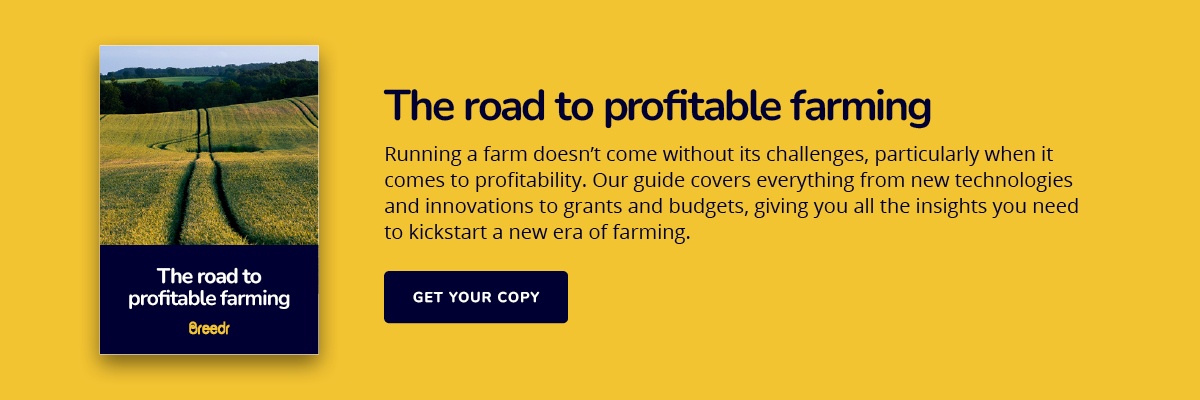What are the new farming techniques for 2022 and beyond?

The future of farming is changing all the time, with innovations and technologies being developed daily.
Do you want to keep up to date with all the new farming techniques? Then you’ve come to the right place. In this blog, we’ll take you through new and existing farming processes to ensure sustainability and the success of your farm.
1. Regenerative farming
As the climate crisis accelerates, you might be looking for more sustainable ways of working. That’s where regenerative farming comes in. It’s a concept that focuses on improving farmland and productivity by increasing biodiversity, enriching the soil and regenerating the land around you. Not only that, but it will reduce your input costs while maintaining production at the same time.
By adopting this technique, you’ll experience many benefits, such as reduced emissions and increased cost savings for your business. In terms of emissions, healthier soil sequesters carbon dioxide, acting as a carbon sink and reducing greenhouse gas emissions.
Healthier soil is made up of good bacteria and fungi, contributing to increased fertility for crops and quality animal feed. Using artificial fertilisers costs money and can also damage the soil, so increasing soil biodiversity is a win-win.
2. Data-powered decision-making
Data has an essential part to play in modern farming. Gathering and analysing data allows you to gain insights, understand your farm and animals better, evaluate profitability and ultimately make better-informed decisions.
So, how can you collect and harness this data? The introduction of farm management apps has revolutionised the way farmers like you operate. You can map your farm, manage medicine distribution, weigh animals, trade livestock and so much more. Data gives you greater control to meet sustainability needs as farming becomes increasingly complex in the future.
3. Precision farming
The likelihood is that you’ve already heard of precision farming. It combines technology with livestock and crop science to improve agricultural productivity. The method allows you to select and apply the correct input, at the right time, in the right place, for the best output.
Precision farming is a sustainable method that helps address and alleviate many environmental, economic and productivity pressures. Statistics show that 80% of farms in England have adopted precision farming methods to increase productivity, around 50% to improve animal welfare and 40% to reduce environmental impact.
It’s estimated that by 2026, the European precision farming market will be sized at 3.2 billion USD, showing it’s a strong method that’s likely to play a vital part in the future of farming.
4. Vertical farming
Vertical farming is another technique that has gained traction in recent years. Crops and plants are grown in a soil-free, layered and vertical environment where lighting, irrigation, fertigation and climate are controlled to maximise efficiency and output. This maximises space vertically, rather than occupying many hectares of land to produce crops.
So, what are the benefits of vertical farming? Not only will vertical farming save you large amounts of time tending to farmland, but it also opens the door to reduced water consumption, year-round crop production, less chemical use and lower carbon emissions.
It’s a market projected to be worth $20 billion globally by 2026 — a potentially tempting figure to be involved in.
5. Micro farming
There’s often the belief that the more land you have, the more money you make. Micro farming is a technique that’s proving this might not be the case.
Micro farming uses the latest technology such as aquaponics, automated irrigation, LED lighting and solar panels to boost productivity and profits. When paired with creative crop selection — for example, crops that can be re-sown several times throughout the season in the same plot of land — you can achieve maximum output on minimal land.
However, this might not be the route to go down if you're already an established farmer. You’ll typically find micro farms in urban areas, although it might be something to consider if you want to diversify your business.
6. Autonomous tractors
Robotic milkers and feeders might have been commonplace on your farm for several years now, but autonomous tractors are taking things one step further.
As you’ll know, farming is highly labour intensive with little time to spare. This is the problem autonomous tractors are trying to solve. Self-driving tractors can automate some of the tasks that typically take up a lot of your time. As they’re often electric, they're better for the environment too. The result? Optimum output with fewer resources, increasing your overall productivity.
7. Invest in technology
Although this may seem obvious, investing in technology is crucial to support future farming techniques. Whether you’re looking to diversify your farm, enhance sustainability, reduce costs, increase productivity, save time or improve animal welfare, technology can help you do that.
Read more: Running a farm of the future – the high-tech approach to agriculture
Creating a profitable future for your farm
Looking for more where that came from? Then you’ve come to the right place. At Breedr, we understand that profitability is fundamental to the future of farming. To read more insightful resources and find out more, head to our profitability page.





